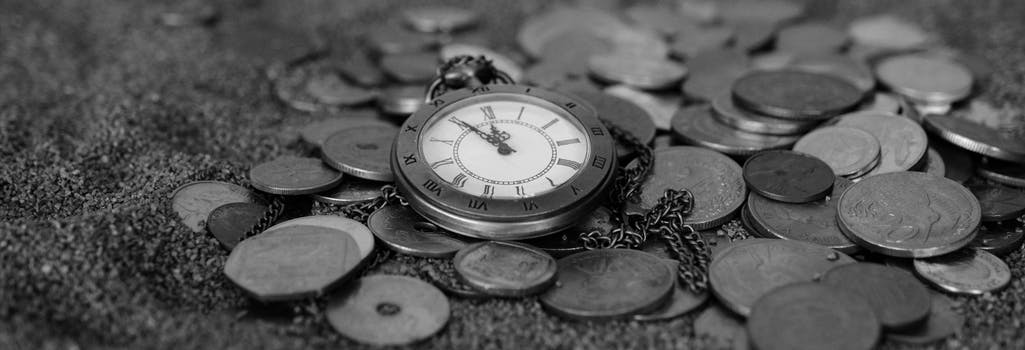Whilst both secured and unsecured lending sources have been around for many years, there are numerous significant differences between these two useful sources of finance. With secured loans such as mortgages and logbook loans allowing the borrowing of larger amounts (up to millions of Pounds in some cases) and unsecured loans offering an increased degree of flexibility and convenience, it is important know the major differences between both and the benefits of using one form of a loan or another.
Unsecured loans on the other hand, including the likes of instalment loans, payday loans and many other options, allow the borrowing of smaller amounts but in a quicker time-frame than most secured loan options. Both categories of loans have their preferred uses and almost all forms of regulated loans will have their restrictions with regards to amounts that can be borrowed, credit checks and regulatory framework and underwriting procedures.
Moreover, both forms of loans are able in cases to be used for personal, business and property-related cases to different effects. For example, a bridging loan may be used for a property purchase as part of an investment portfolio, whereas mezzanine finance (a variation of bridging loan) is more likely to be used for business purposes.
It is therefore important to understand what common types of unsecured lending include as well as how and where they differ from secured loan options available in the UK.
Common Types of Unsecured Loans
Unsecured loans in principle are as simple as a prospective borrower making an application for a desired sum of money to be repaid over an agreed timeframe, with interest added; making a profit for the lender. In past years, the most common route of acquiring an unsecured loan was via one’s bank.

A conversation with the bank manager and some quick checks of one’s overall financial status was all that was needed in order to secure a much-needed loan of potentially several thousand Pounds. Nowadays however, there are more options than ever and the process differs.
Payday Loans – Perhaps the best-known and most widely recognised form of unsecured loan, payday loans have been around for quite a while. They allow a borrower to borrow a smaller amount; usually up to around £1,000 to be repaid on the next payday. These loans are often referred to as ‘emergency loans,’ as they tend to be used when un unexpected bill or expense pops up and the borrower needs to be tided over until their next payday where they will clear their debt and the interest I none go.
Instalment Loans – These loans follow a similar premise to that of payday loans in that whilst they may be of slightly larger amounts, they still tend to be smaller amounts (also up to around £1,000.) However, where these differ from payday loans is that instead of having to pay off the loan plus interest in one go, the borrower agrees with the lender to repay over a pre-agreed timeframe, which will be anywhere up to 12 months. This means that the repayments are much more manageable for the borrower as they will be repaying their debt spread over a longer time.
Guarantor Loans – Guarantor loans in themselves are nothing new. These work by the borrower being able to borrow a larger amount than instalment or payday loans as the loan amount and their debt is guaranteed by a third-party guarantor who agrees to cover the debt and repayments should the primary borrower default. This works in a similar way as having collateral on a secured loan may, in that there is a degree of security for the lender that the borrower and the lender both have fall backs in the case of missed payments. These loans allow larger amounts to be borrowed (up to around £10,000.)
What Are the Differences Between Secured and Unsecured Loans?
Whilst both secured and unsecured loans can sometimes be used for similar and sometimes even the same purposes, there are several differences between these two categories of loan which are important to be considered when making the choice of which loan and which specific type of loan to apply for:
- Security on the Loan
Arguably the most important difference between secured and unsecured loans is the very nature of both types. Secured loans require a high value asset; usually a property or vehicle to be used as collateral on the loan. This acts as a form of security meaning that if the borrower cannot repay, the lender has the power to seize the asset to recoup their costs and repay debts owed by the borrower.
- Amount Borrowed
Because secured loans have collateral, it is possible to borrow significantly more when it comes to secured options as opposed to unsecured equivalents. It is always important to know how much you can borrow when applying for any loan. For example, mortgages and bridging loans can be in excess of £10 million depending on the exact nature and value of the property or properties in question. Unsecured loans in general however, only tend to lend up to a few thousand Pounds as the risk is greater to the lender, with no security on the loan. Business loans though are different as more money can be borrowed. However, these processes are different.
- Interest on Loans
Because of the increased risk to the lender, most unsecured loans have higher interest than their secured equivalents. This is to offset the risk of the borrower potentially not paying off their debt. Secure options however, have far less risk associated with them as the borrower will agree to the lender being able to seize the asset used as collateral should they default.
- Length of Repayments
Unsecured loans for the most part are paid of within 12 months. For example, an instalment loan may be spread over the course of 12 months by which time the debt should be settled and paid off in full. However, generally, an unsecured loan will be repaid much sooner than this as the loan amount is significantly less than a secured loan (usually.) Secured loans on the other hand, such as mortgages may stretch over a number of years; sometimes more than 20 years. This is because someone borrowing say £500,000 as a mortgage will not be able to repay this in a year and will need more time to cover these costs compared with an unsecured loan of much less.
- Credit Checks
Whilst lenders now carry out credit checks and assess credit and spending behaviour for all nature of loans, secured loans will generally entail more rigorous checks as with a larger loan amount, the lender needs to be sure the borrower has the means and the credit behaviour to repay their debt. Unsecured loans such as payday loans however, do carry out credit checks but these will not be as rigorous as those for a secured loan such as a bridging loan or mortgage as the amounts of money associated are much less, making the cost of carrying out more rigorous checks less of a requirement for many.
- Property Purchases
In order to purchase a property, the vast majority of people need a mortgage or secured loan of some kind. The loan is provided and the debt is secured against the property or development in question. This is the driving force behind the lender’s provision of the loan. If the property is worth less, then less can be borrowed; the loan-to-value (LTV). However, if one doesn’t have a property with which to secure the loan, they will be unable to purchase a property in this way. For example, a tenant who rents their property from a landlord, is unable to secure a loan against their place of residence as they do not actually have ownership.
